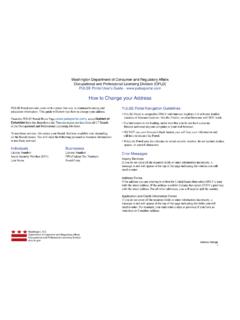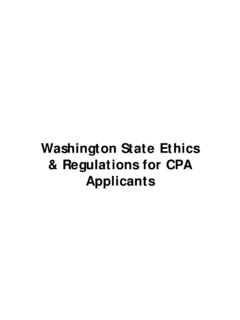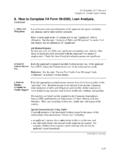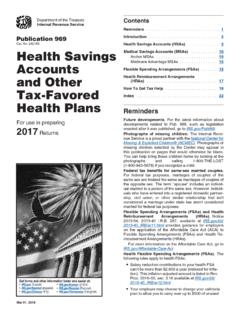Transcription of Guide to Land Leases for Solar - Sustainable Power …
1 1 Guide to land Leases for Solar July 2016 SEIA | 600 14TH Street, NW | Suite 400 | Washington, DC | 20005 | 2 Introduction Large scale Solar projects, such as community Solar and investor-owned Solar systems on farms, have expanded rapidly throughout the These projects can use approximately 6 to 7 acres for every megawatt (MW) of Solar installed, so a 5 MW project would require 30 to 35 acres. As a result, Solar developers ( developers ) routinely contact farmers and other landowners ( landowners ) to obtain sufficient land to develop a financeable project. Leases can provide extra income to landowners by turning unused or underused land into revenue generation opportunities. But entering into a lease agreement is a significant decision for any landowner.
2 Landowners should always understand the fundamental terms of the proposed agreement, how the lease will affect their property, and the right questions to ask developers. And landowners should always seek legal and tax counsel before entering into any agreement with a developer. Basics INITIAL SITE VISIT Following an initial inquiry, a developer will visit the property to determine its suitability for a Solar project. The developer will examine the amount of available land , grading, objects shading the property and whether they can be removed, easements, soil conditions, and proximity to Power lines, among many other factors. lease OPTION If a developer finds the land suitable, the developer will usually make an offer to lease the land from the landowner. At this point, it is recommended that the landowner seek legal and tax counsel.
3 The developer and landowner can enter into a lease option that provides some flexibility to the developer as he or she assembles the deal before choosing whether to exercise the option to lease the land . Under this lease option, the landowner provides the developer time (typically 2 to 3 years) to decide if and exactly how much land he or she will ultimately lease . During this time, and until the developer exercises the lease option, the developer usually makes regular payments to the landowner at an amount negotiated between the parties. The lease option should make clear who is responsible for paying taxes on the land , what happens if the developer doesn t fully build the project, and who is responsible for any environmental clean-up at the end of the lease .
4 Keep in mind that the lease option does not guarantee that the developer will lease all or any of the property. LETTER OF INTENT Instead of a lease option, some developers use a Letter of Intent (LOI). A LOI is designed to outline the lease agreement s proposed terms and issues that need to be addressed before signing a lease . A LOI can be either nonbinding or binding. Landowners should consult with an attorney and tax advisor about the implications of entering into a LOI. lease Once the developer has made the decision to begin building the intended project, the developer and landowner, each with the advice of legal counsel, finalize the terms and enter into a binding lease . The lease will govern the rights of the developer and landowner over the land used for the project over the life of the project and beyond.
5 3 Questions to Ask a Solar Developer A lease is legally binding contract and a long-term partnership and must not be entered into lightly. The best partnerships are those where the landowner and the developer both fully understand the deal. Asking questions upfront helps avoid misunderstandings. If a term or condition is important to you, make sure that it is included in the signed lease agreement. Below are some of the top questions that landowners should ask a developer before when entering into an agreement. Have you completed similar Solar projects in my state? Can you provide references? Entering into a long-term lease is a binding agreement, so do your homework. Ask for a developer s references and contact them. Ask if the company is a member of the Solar Energy Industries Association (SEIA), the national trade association for Solar that requires all members to abide by the SEIA Solar Business Code, a national code of conduct.
6 Contact the local Better Business Bureau for the location where the developer has done business. What land will be leased? The developer and landowner should agree which part(s) of the land can host a Solar project. A developer may determine that only a portion of the land is suitable for the project while a landowner might wish to keep that portion of land clear for their personal use. Make sure both parties agree in writing on the portion of land for development in a manner the landowner finds understandable and specific. What is the effect on non-leased land ? Landowners should determine the effects on the unleased property. Considerations include vehicle access if the unleased portion is not along a public right of way; the accessibility of the unleased land to utilities and other services; and current and planned uses for the unleased property.
7 For instance, Solar developers will want to contract for protections to ensure that trees, buildings, and other improvements do not shade the Solar panels. How long does the term run? Solar developers may propose a lease term of 20 years or more with options to continue the lease for additional years. As discussed above, a lease can impact a landowner s current and future use of their property, so landowners should consider their long-term plans when examining the economics of a proposed lease . The lease can even impact your heirs and future generations. How is rent calculated? Annual rents are typically based on the amount of acreage leased by the developer. Some developers may base annual rent on the amount of Power (in megawatts, or MW) of the system; in this case, ask the developer the maximum and minimum feasible system sizes to be installed.
8 Other developers offer a base rent plus a percentage of the project s revenues. In a percentage of revenue situation, the base rent will be lower than in a fixed-rent deal, but the ultimate payout could be higher if the project is successful. (Keep in mind that there is more risk associated with this structure than fixed-rent deals.) Ask whether rent payments increase by a certain percentage at regular intervals. Who pays for taxes and other expenses? The lease should clearly identify whether the landowner or Solar developer pays such items as real estate taxes, landowner insurance premiums and other landowner expenses associated with the property. Some issues to consider with respect to taxes are 1) whether the land leased is one or more separate tax parcels or part of a larger tax parcel, 2) whether the Solar project will cause the land to qualify for any tax incentives, and 3) whether the Solar project causes a loss of tax status due to conversion ( , if it is now used for non-agricultural purposes).
9 4 What if the land is mortgaged? If there is a mortgage or other security instrument on the property, the applicable loan documents should be reviewed to determine whether the lease might trigger lender approval rights. The Solar developer might also require that the landowner obtain a subordination, non-disturbance and attornment agreement so the lender agrees not to disturb the tenant s interest under the lease in the event of a foreclosure. What protections might the Solar developer s lender want? The developer may want to finance its improvements, and its lender may want protections that its rights to take over the lease are not impaired and that it has a right to cure any developer defaults. Those lender protections are generally not a problem because all parties wish to keep the lease in force.
10 What happens to the developer s improvements? The landowner will want a clear understanding that of what happens at the end of the lease . Often, the landowner will want the developer to remove the Solar project at such time to return the land to its original state. Such removal can be expensive. To ensure the developer fulfills his or her obligations, a landowner may require a deposit or escrow to cover the costs of returning the land to its original state. Who will maintain the land ? Issues to consider include vegetation clearance, drainage (such as storm water management), buffer zones, fire safety, and wildlife. If the developer is responsible for, but fails to maintain, the land and that failure harms adjacent land or future use of the leased land , the landowner may want the right to be reimbursed for any costs or losses.







